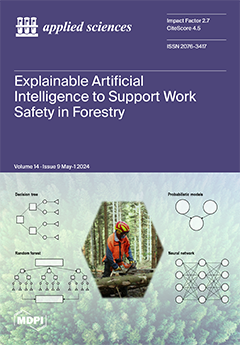The geological conditions evaluation of coalbed methane (CBM) is of great significance to CBM exploration and development. The CBM resources in the Southern Sichuan Coalfield (SSC) of China are very abundant; however, the CBM investigation works in this area are only just beginning,
[...] Read more.
The geological conditions evaluation of coalbed methane (CBM) is of great significance to CBM exploration and development. The CBM resources in the Southern Sichuan Coalfield (SSC) of China are very abundant; however, the CBM investigation works in this area are only just beginning, and the basic geological research of CBM is seriously inadequate, restricting CBM exploration and development. Therefore, in this study, a representative CBM block (Dacun) in the SSC was selected, and the CBM geological conditions were evaluated based on field injection/fall-off well testing, gas content and composition measurements, and a series of laboratory experiments. The results show that the CH
4 concentrations of coal seams in the Dacun Block, overall, take on an increasing trend as the depth increases, and the CH
4 weathering zone depth is 310 m. Due to the coupled control of temperature and formation pressure, the gas content shows a “increase→decrease” trend as the depth increases, and the critical depth is around 700 m. The CBM is enriched in the hinge zone of the Dacun syncline. The moisture content shows a negative correlation with CBM gas content. The porosities of coal seams vary from 4.20% to 5.41% and increase with the R
o,max. The permeabilities of coal seams show a strong heterogeneity with values ranging from 0.001mD to 2.85 mD and present a decreasing trend with the increase in depth. Moreover, a negative relationship exists between coal permeability and minimum horizontal stress magnitude. The reservoir pressure coefficients are between 0.51 and 1.26 and show a fluctuation change trend (increase→decrease→increase) as the depth increases, reflecting that three sets of independent superposed gas-bearing systems possibly exist vertically in the Longtan Formation of the study area. The Langmuir volumes (
VL) of coals range from 22.67 to 36.84 m
3/t, indicating the coals have strong adsorptivity. The
VL presents a parabolic change of first increasing and then decreasing with the increase in depth, and the turning depth is around 700 m, consistent with the critical depth of gas content. The gas saturations of coal seams are, overall, low, with values varying from 29.10% to 116.48% (avg. 68.45%). Both gas content and reservoir pressure show a positive correlation with gas saturation. The CBM development in the Dacun Block needs a large depressurization of reservoir pressure due to the low ratio (avg. 0.37) of critical desorption pressure to reservoir pressure.
Full article





